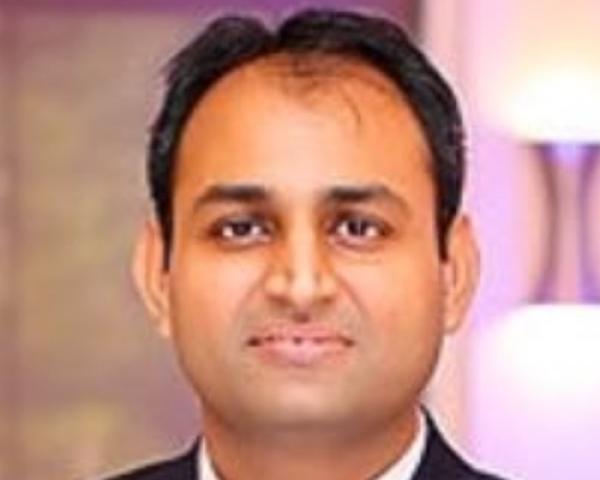Navigating healthcare costs can often be a challenge, as seen when engaging with practitioners. Typically, when a doctor prescribes drugs or recommends tests, they send their instructions to the pharmacy or laboratory, leaving both the patient and doctor unaware of the impending costs. Isn't it better if we could know the cost before it is incurred, taking advantage of various data sources at our disposal?
I experienced this issue firsthand when my wife and I were anticipating the arrival of our first child. The quotes for a simple imaging procedure varied widely among providers, with costs ranging from $100 to $800. As a professional in healthcare technology, I was equipped to untangle this ambiguity, yet it was clear the potential confusion it could cause for someone outside the field.
Experiences like these empower my profound desire to develop a healthcare system that stands not only for affordability but also for transparency and accessibility for all. Despite the geographic disparities, my unwavering vision of establishing advanced healthcare facilities in remote areas of the world holds steadfast. My aspiration is to create a system that capitalizes on data science, using historical data to mold a future where healthcare isn't a privilege but an inherent right for all. My steadfast mission is to guarantee that quality and economical healthcare services are available to every individual, regardless of their socio-economic status or geographic location.
Healthcare Challenges
The primary issues with healthcare cost predictability are rooted in the complexity of the healthcare system and the intricate nature of many contributing factors. These include:
- Lack of Transparency: Healthcare systems and billing can be very complex, making it difficult for patients to understand exact costs upfront.
- Inconsistent Pricing: The prices of services can vary dramatically among different healthcare providers and even geographical locations, with the patient often unaware of the reason for this variation.
- Complex Billing: Medical bills can be incredibly complex and hard to decipher. They may include medical jargon, coding systems or abbreviations that a layman would not understand.
- Hidden Fees: Hidden, undisclosed or unexpected fees can be tacked onto the bill, such as facility fees or charges for additional procedures or tests, and patients aren't typically made aware of these costs up front.
- Insurance Complications: Insurance policies often involve complex terms and conditions and may not entirely cover certain services, leaving patients with unexpected out-of-pocket expenses.
- Unexpected Costs: There can be unexpected costs included in the final bill, for services like laboratory tests or additional procedures that were not initially accounted for.
See also: Using Data Science to End Surprise Billing
Technological Challenges
From a technical perspective, implementing a solution to predict healthcare costs brings a host of challenges:
- Data Integration: Integrating data from a multitude of sources, each with different data storage systems and formats, is a significant hurdle.
- Real-Time Processing: Given the dynamic nature of the healthcare industry, the system needs to process data in real time (or near real- time) to provide accurate estimates, which is technically demanding.
- Regulatory Compliance: Compliance with healthcare regulations, notably HIPAA in the U.S., is mandatory when handling patient data. Fulfilling these requirements while implementing advanced data analytics can be complex.
- Data Quality: Inconsistent, incomplete or erroneous data can impede the development of accurate predictive models. Ensuring high-quality data is challenging but essential.
- Security: Healthcare data is sensitive, making robust security measures a necessity to prevent data breaches.
- Resource -Intensive: Developing, implementing and maintaining a solution is resource-intensive, both in terms of cost and technical expertise.
- User Acceptance: The solution needs to be user-friendly and easily interpretable by non-tech users like patients and healthcare providers, which is an additional challenge in design and implementation.
See also: Insurance Models Driven by Hourly Wages
Comprehensive Solution:
To address the problem of unpredictability in healthcare costs, a comprehensive solution can be designed in the form of a Healthcare Cost Prediction Platform. This platform would integrate AI and machine learning algorithms to process and analyze huge datasets from various relevant sources. Here is a broad overview of the solution:
- Multi-Source Data Integration: The platform will integrate data from various healthcare providers, pharmacies, laboratories and insurance companies. It will use robust application programming interfaces (APIs) and data connectors to bring all this data from disparate sources into a unified environment.
- Data Standardization and Quality Control: After the data integration phase, the platform will standardize data to remove inconsistencies and attain uniformity. The integrity of the data would be ensured by regular quality checks to increase the reliability of the predictions.
- Predictive Analytics Tools: The core of the platform would consist of sophisticated AI-driven predictive analytics tools. These tools would analyze the historical data and extrapolate that into future costs, giving the patient and doctor a clear idea about the cost implications even before the treatments commence.
- Real-Time Updates: The platform would be designed to handle real-time data, allowing for cost updates as prices change at healthcare providers and insurance policies get updated.
- Security and Compliance: The entire solution would be designed with privacy and security at its core, maintaining strict compliance with regulations like HIPAA to safeguard sensitive patient information.
- User-Friendly Interface: The platform would be equipped with an easy-to-use interface, providing cost estimates and comparisons in a comprehensible format. An integrated dashboard could allow users to input their specific needs and get an accurate estimate of costs.
- Continuous Learning: The platform would be capable of learning from the previous data to improve the accuracy of its predictions over time, making it more reliable.
By implementing this Healthcare Cost Prediction Platform, we can tackle the challenge of unpredictability in healthcare costs, making healthcare more affordable and transparent for everyone.








